Blog
BLOG
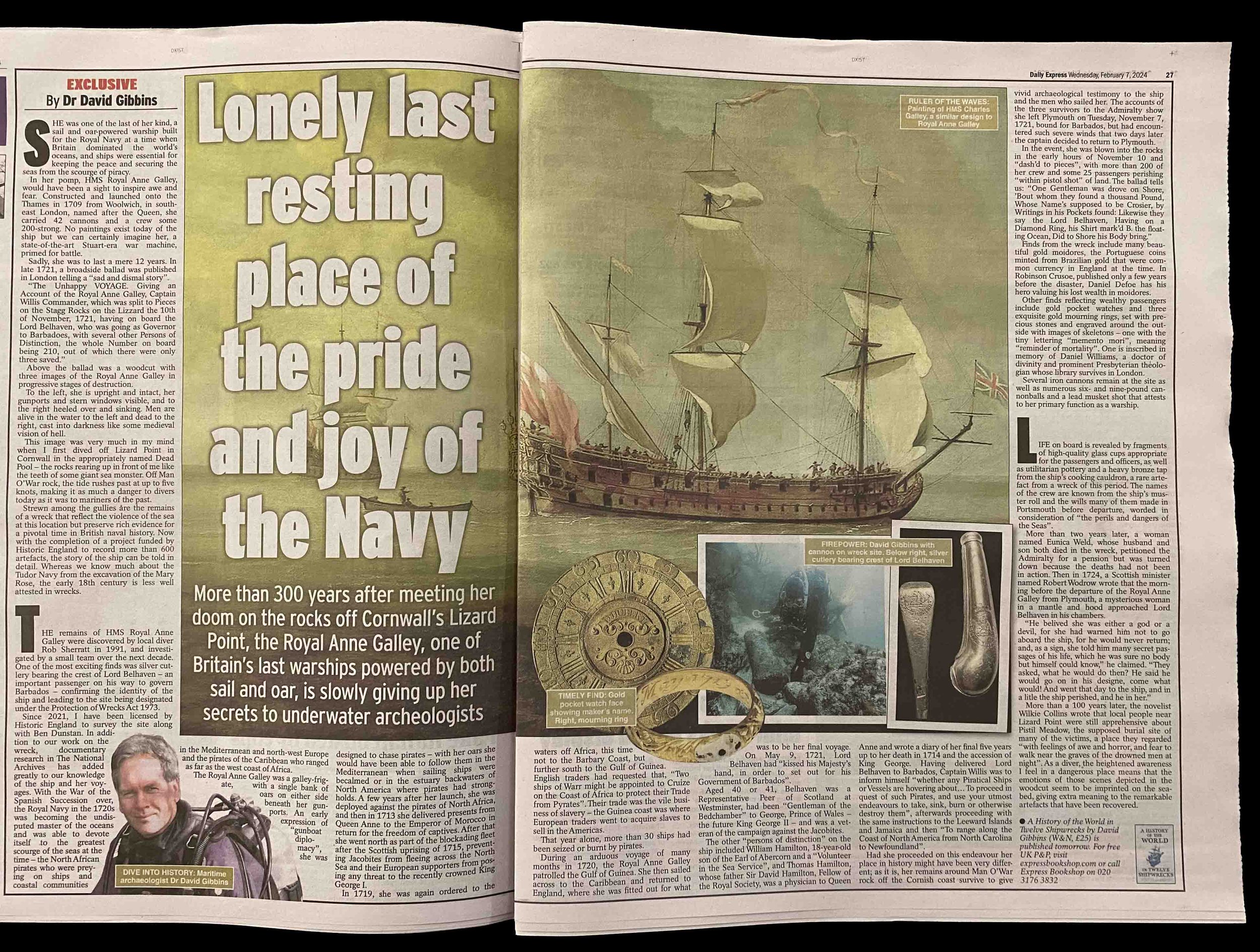
Click here to read a pdf of this article by me on the Royal Anne Galley in the Daily Express on 7 February 2024 …
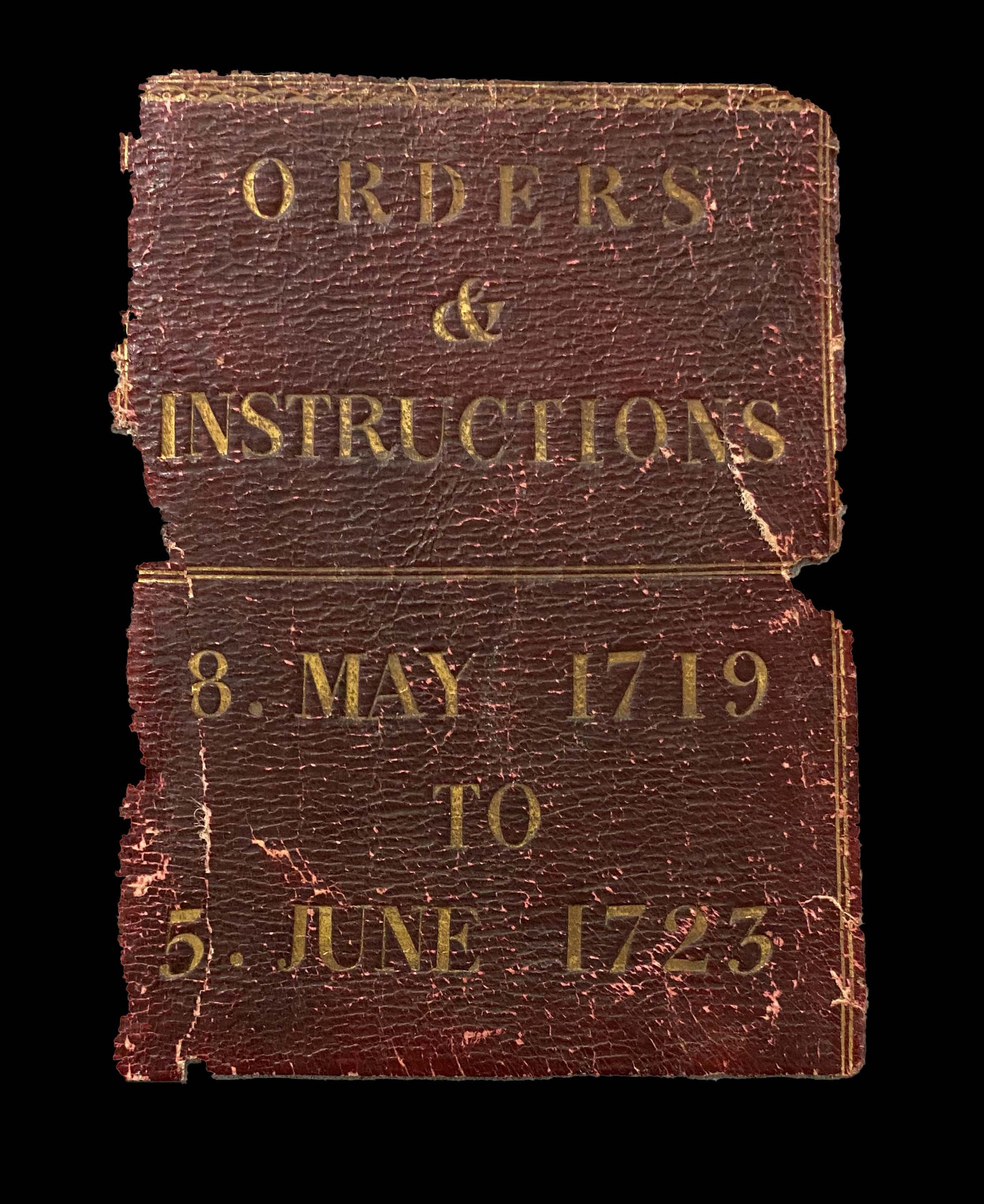
In my book A History of the World in Twelve Shipwrecks, I include a summary of the orders given by the Admiralty to Captain Francis Willis of the Royal Anne Galley for her voyage to the Caribbean in 1721 …

In 2009 I was excited to discover that the British Museum held a bird arrow acquired by a British army officer during the Rumpa Rebellion, a tribal uprising in India in 1879-81 that was countered by a force of Indian and British troops eventually numbering more than 2,500 men. Among the officers involved was my great-great grandfather, Lieutenant Walter Andrew Gale, Royal Engineers, and at the time I was carrying out research in the India Office Records of the British Library …
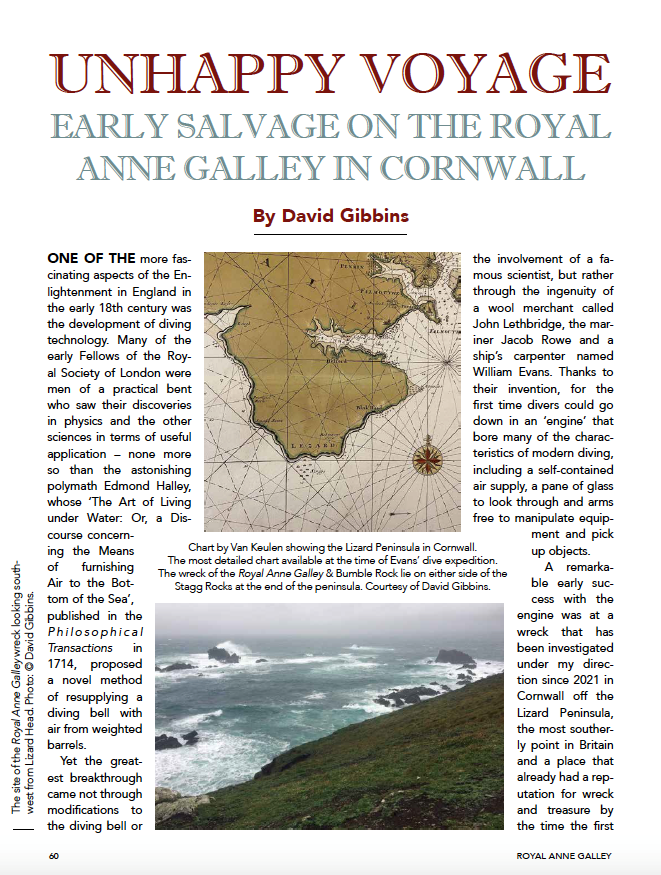
I’ve been very pleased to contribute a number of articles to Wreckwatch magazine since its foundation in 2020, allowing me to write about some of my current projects off Cornwall in England and to look back on my career as an archaeologist and writer. Wreckwatch is an exciting innovation conceived and edited by Dr Sean Kingsley …
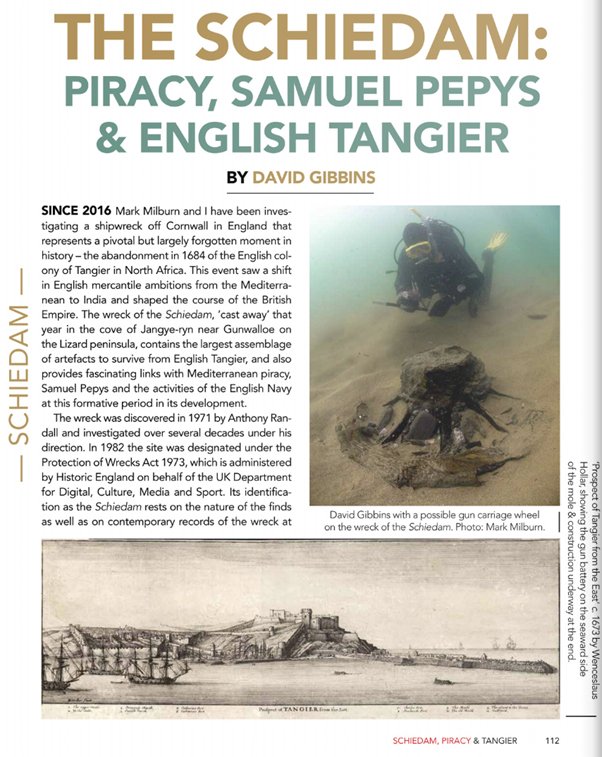
This article on the wreck of the Schiedam was published in the December 2020 edition of Wreckwatch magazine, which you can read in full for free here. It complements three other blogs here on the wreck: a report with more detail of the historical documentation here, a report on the unique 16th century merchant’s weights here and links to 3D models of several of the artefacts at the site here.

This paper by my father appeared in The American Biology Teacher (University of California Press), Volume 61, Number 7, September 1999, pages 504-509, during his final year as a Professor of Microbiology at the University of Guelph, in Ontario, Canada. Click on the image below to open a pdf of the entire article.
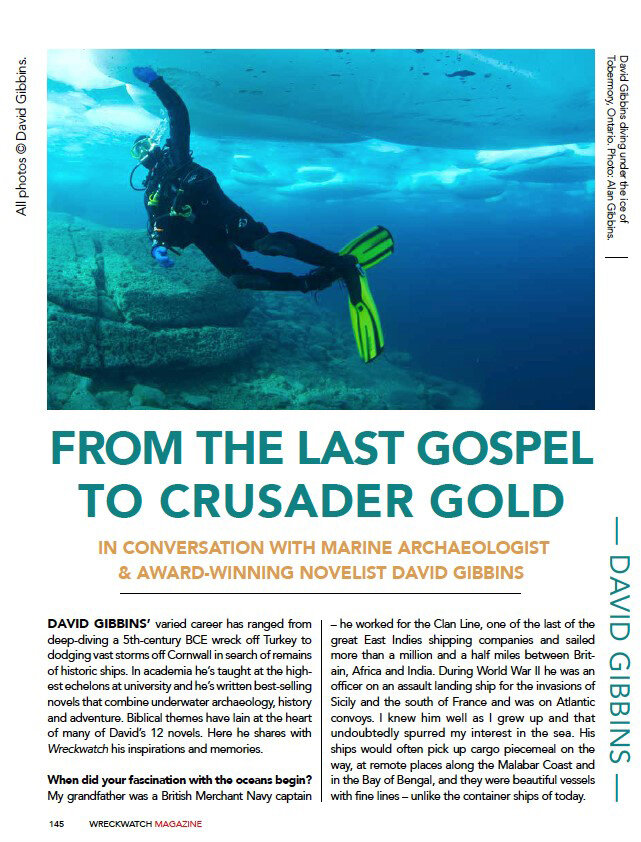
Click here or on any of the pictures below to read an in-depth interview with me in the 2021 edition of Wreckwatch magazine, all about my novels and the inspiration for them in my real-life discoveries. You can read the magazine for free including many fascinating articles on shipwreck exploration simply by filling in your name and email address as indicated on the Wreckwatch hompage.

The ship’s bell in these photos is one of the most remarkable artefacts ever to have come from a shipwreck off Cornwall, and tells a story of adventure and tragedy on the high seas rivalled by few other accounts of wrecks off these shores. The bell came to light in late 2020 when a manor house in west Cornwall was being renovated, and photos of the bell were sent to us at Cornwall Maritime Archaeology. We were astonished to see the words THE PRESIDENT and the date 1675/6 on the bell, meaning that it could only have come from the East Indiaman of that name wrecked with terrible loss of life off Loe Bar in 1684 – almost certainly a cannon wreck at that location that we first dived on in 2018 and have been investigating since then …
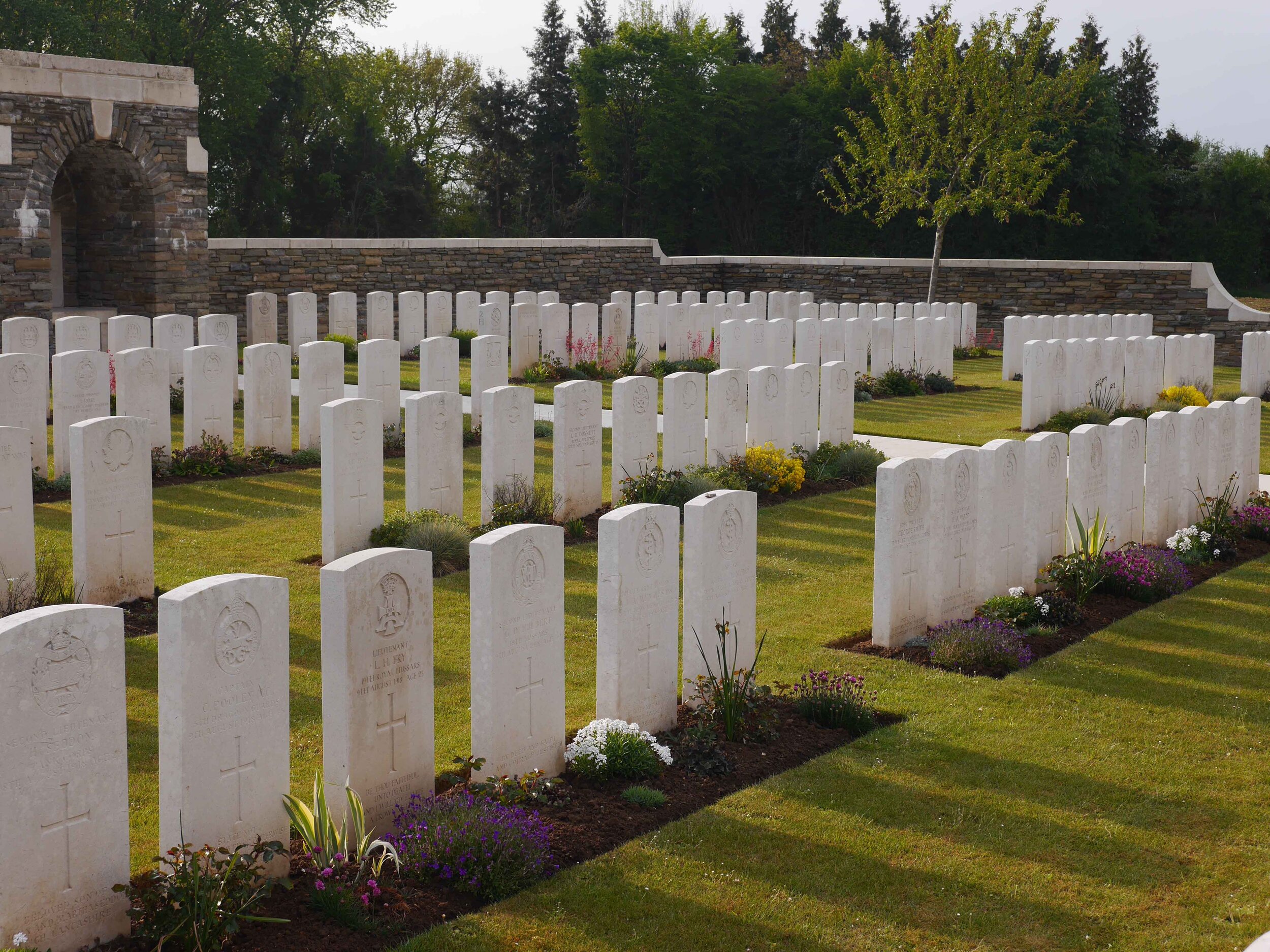
On the evening of 9 August 1918 during the Battle of Amiens a German aircraft dropped a bomb in the courtyard of a farmhouse in the French town of Caix, killing or wounding 20 men of the British No. 3 Cavalry Field Ambulance who were using the building as an Advanced Dressing Station. One of the survivors in the courtyard was my grandfather, Tom Harold Verrinder, a 21-year old Lance-Corporal in the 9th Lancers who had been detailed at the beginning of the battle to act as galloper for the officer commanding the Ambulance. The incident took place in the midst of one of the greatest battles of the First World War …
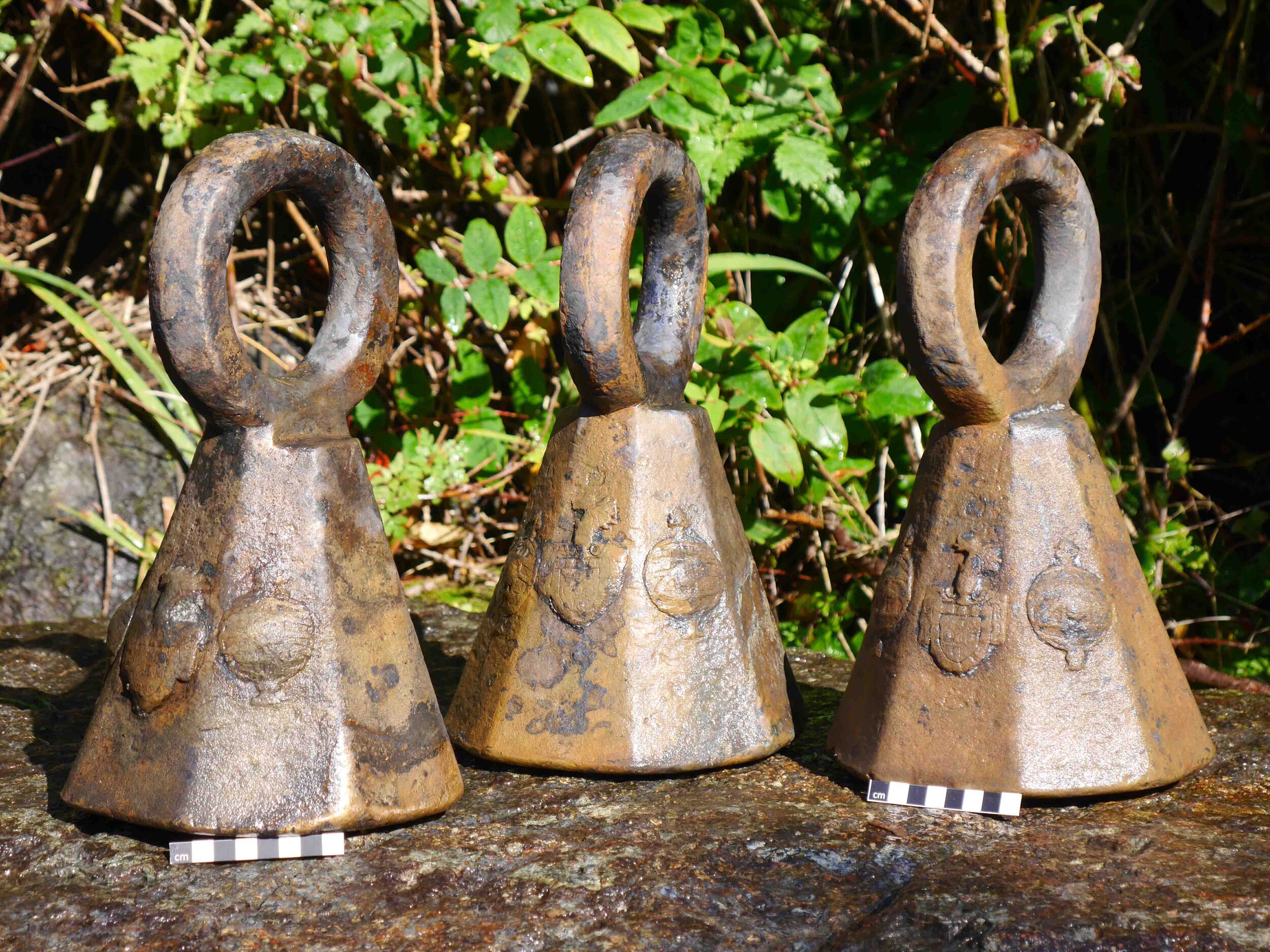
In September 2020 over the course of eight dives I raised the three 56 lb (25.4 kg) bronze weights in this photo from the wreck of the Schiedam, a Dutch-built ship of some 400 tons that was ‘cast away’ near Gunwalloe off the west coast of the Lizard Peninsula on 4 April 1684. The wreck was discovered in 1971 by Anthony Randall, designated under the 1973 Protection of Wrecks Act and since 2016 has been investigated under my direction and that of Mark Milburn, the current Licensees from Historic England for the site …
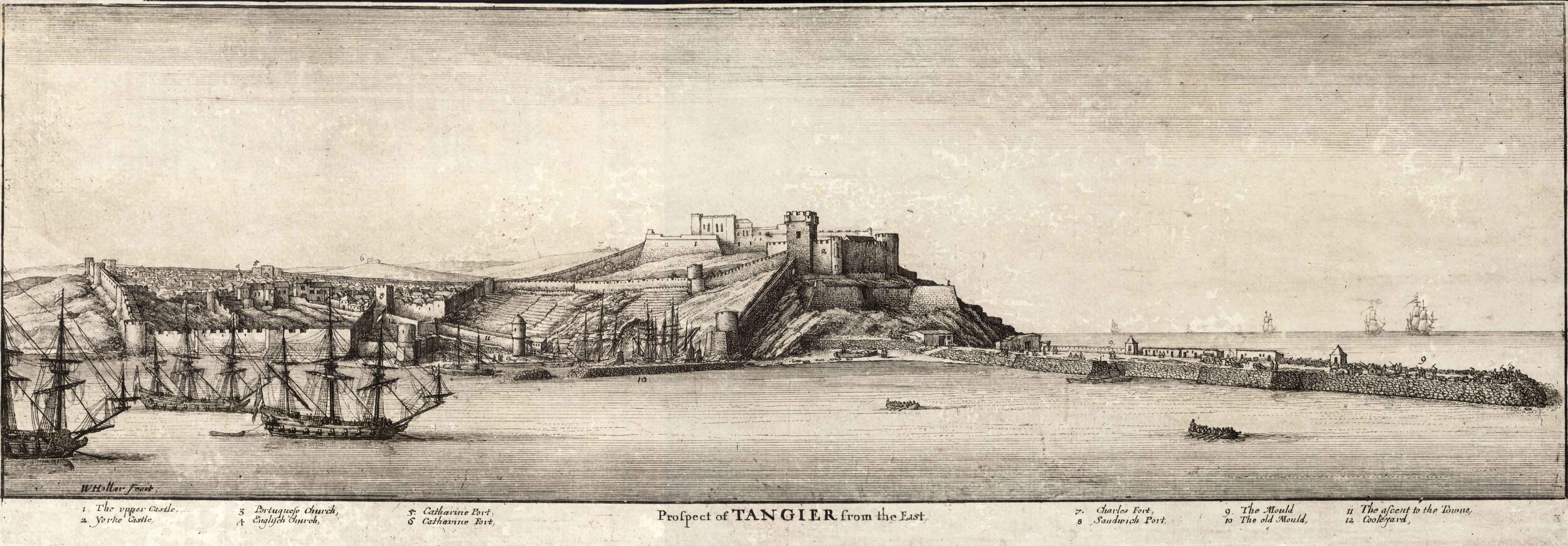
The Schiedam, more fully ye Groette Schedam van Horn (the ‘Great Schiedam of Horn’), was a ship of some 400 tons built at Hoorn in Holland and wrecked near Gunwalloe off the west coast of the Lizard Peninsula in Cornwall on 4 April 1684. She was a fluyt, called by the English a ‘flyboat’, a type of wide-bellied cargo vessel with minimal armament and a small crew. The wreck was discovered in the shallow cove of Jangye-ryn in 1971 …
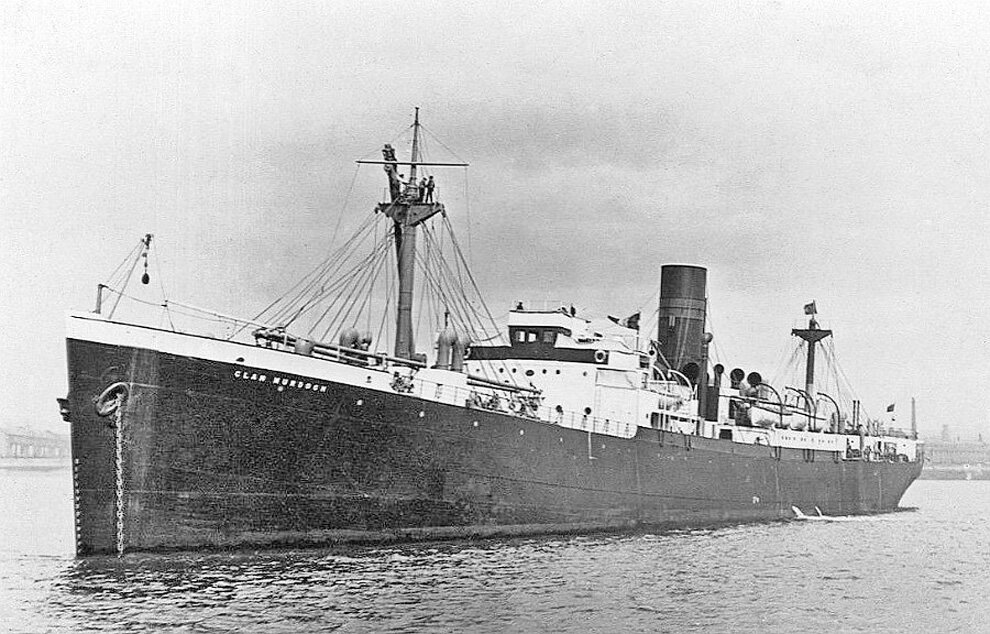
Several years ago I wrote a blog about this photo of my grandfather Captain Lawrance Wilfred Gibbins with his gun crew on SS Clan Murdoch in 1940-1. He told me that he had been in action with this gun against German aircraft that machine-gunned and bombed his ship …
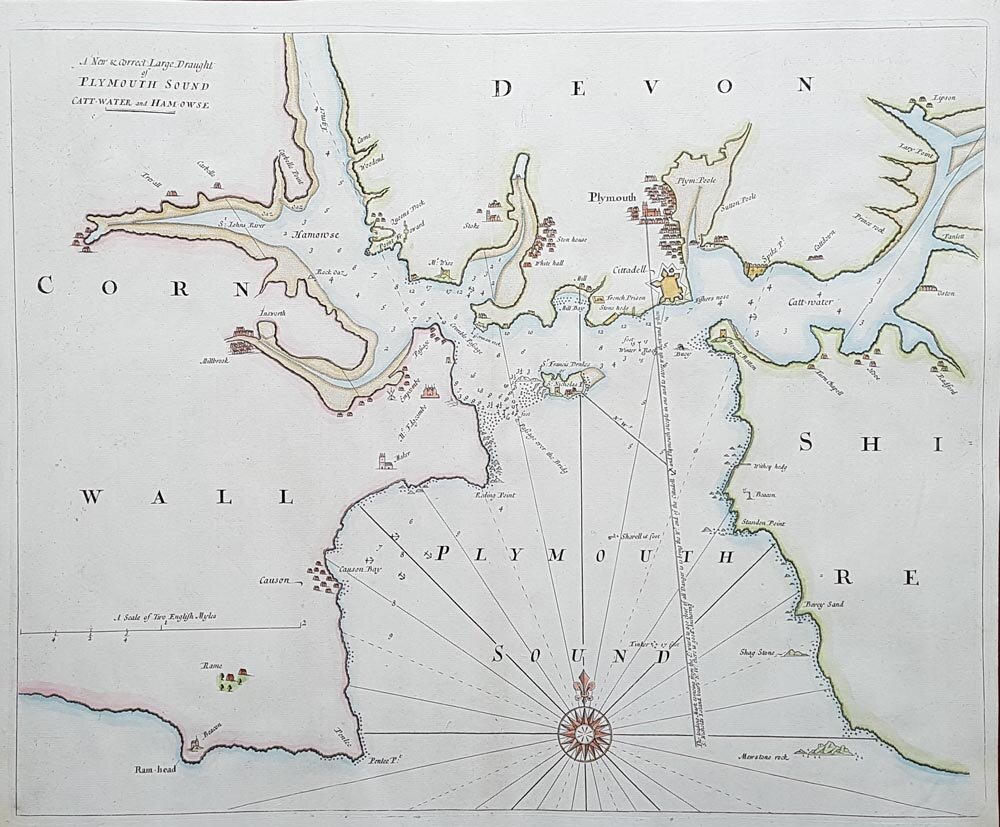
Following on from my last blog, the Marinelives project has revealed another previously unknown shipwreck off Cornwall among the High Court of Admiralty (HCA) manuscripts of 1627-77 held in the National Archives at Kew. In this case the location of the wreck is more precisely recorded, leading to the possibility that it may one day be found. Of particular interest is the richness of the cargo …
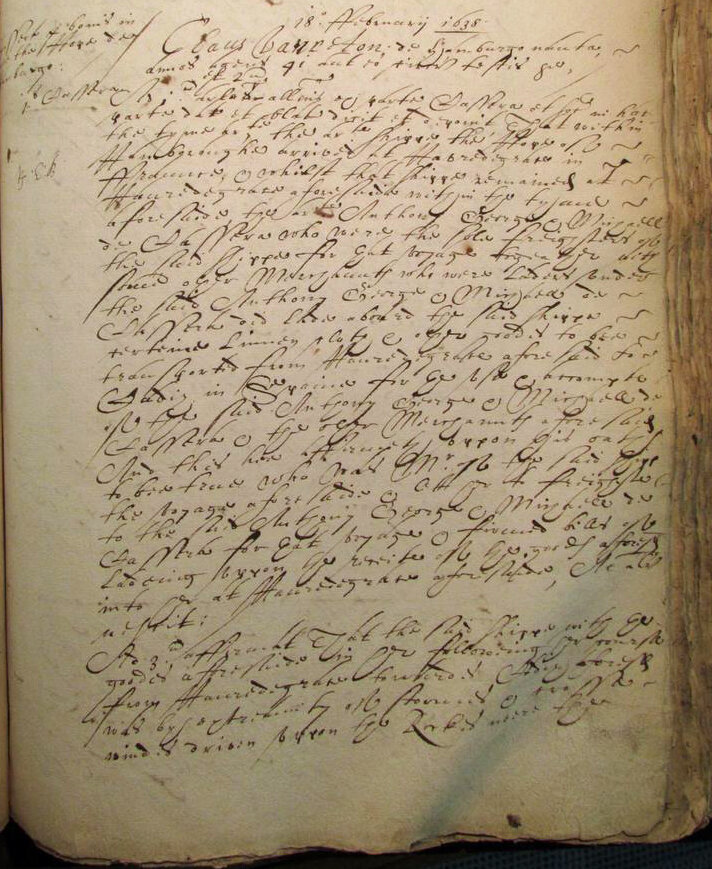
A previously unknown shipwreck of the 17th century, ‘by extremity of stormes and crossewindes driven uppon the Rockes neere the Lizard uppon the coast of Cornwall’, has been revealed by the Marinelives project, an effort to transcribe High Court of Admiralty (HCA) manuscripts of 1627-77 held in the National Archives at Kew. The following transcription was made by Colin Greenstreet in 2017 from HCA 13/54, a volume of witness statements (depositions) of 1638-9 comprising over 500 folios. The version here retains most of his original text and spelling …
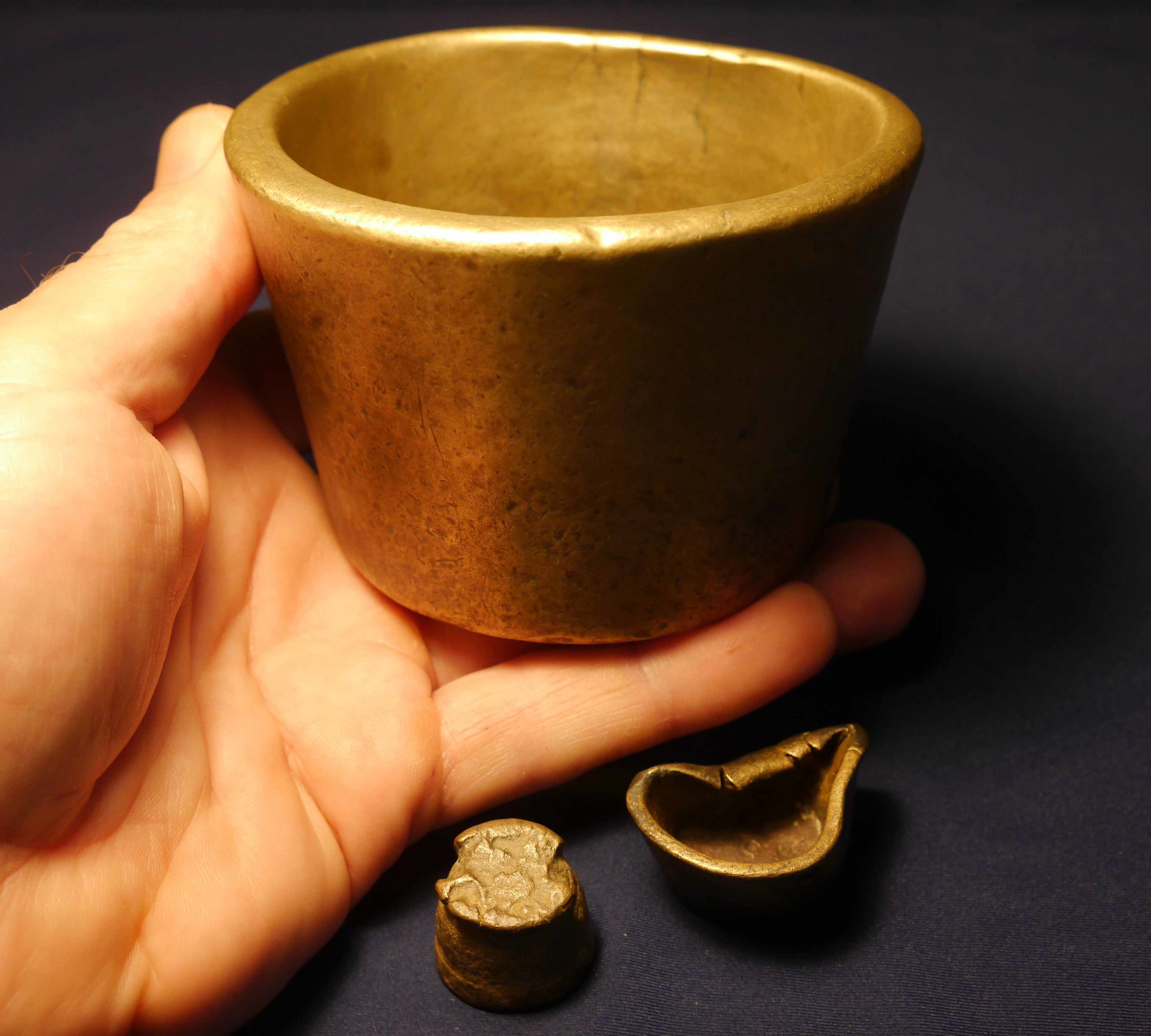
Several blogs back I reported on my discovery of a 2 pound Amsterdam blokgewicht (block weight) from the Mullion Pin Wreck, an important find in its own right and also because the date of 1665 stamped on the weight provides additional evidence that the ship was indeed the Santo Christo de Castello from Amsterdam (Gibbins 2019a). In this blog I’m reporting on three more weights with markings, one of them – a large cup weighing over 3 pounds - found only last week …

I discovered this figure in 2019 while diving on the Mullion ‘Pin Wreck’, a mid-17th century merchantman off Cornwall so-named for the abundance of brass clothing pins found at the site. The wreck is almost certainly the Santo Christo de Castello, a Genoese-owned ship built in Amsterdam in 1666 and wrecked on her maiden voyage the following year from Holland via London towards Iberia …
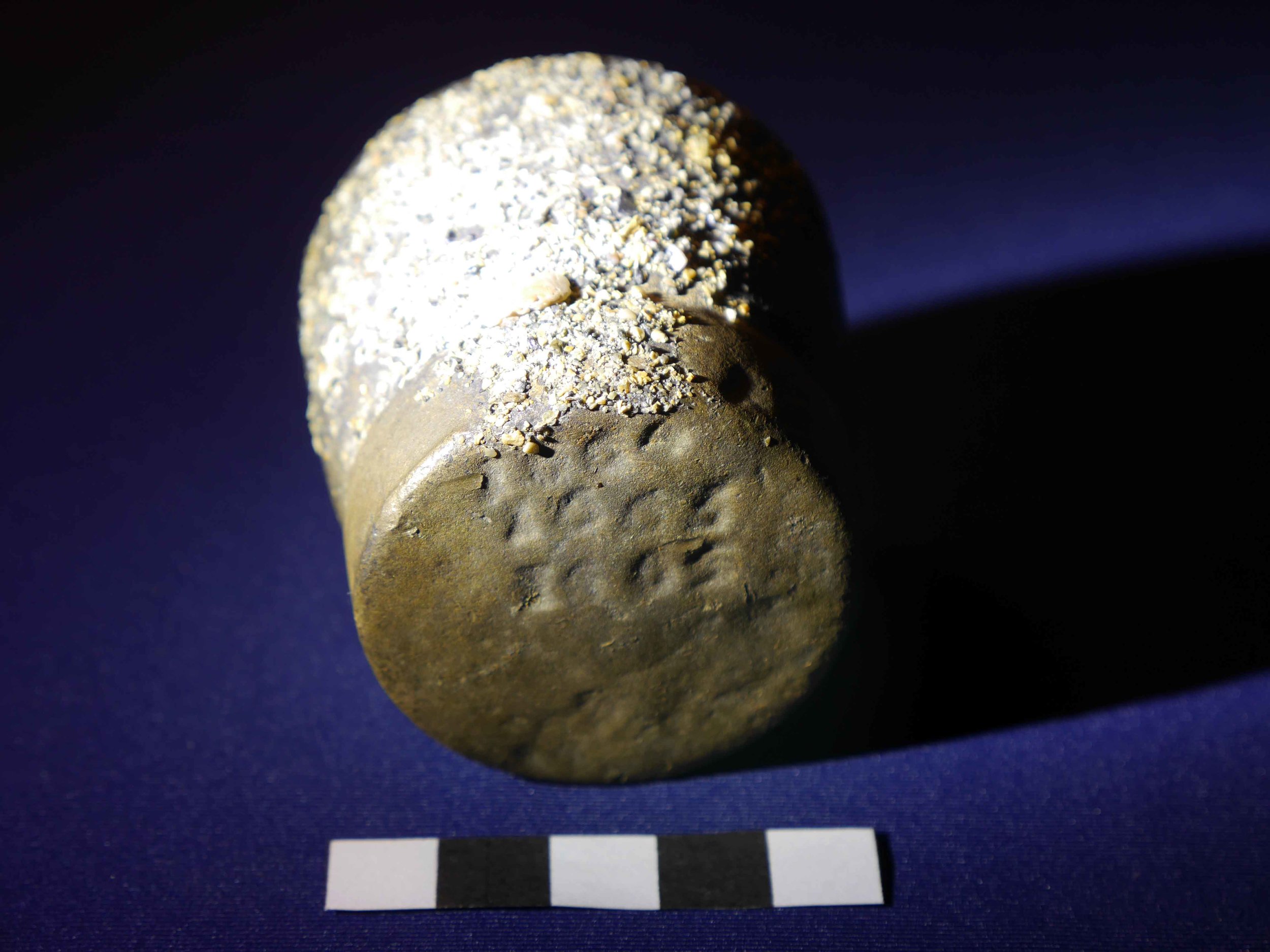
I discovered the artefact in these photos in 2018 while diving on the Mullion ‘Pin Wreck’, a mid-17th century merchantman wrecked off the west coast of the Lizard peninsula in Cornwall, England. It is a two-pound Amsterdam blokgewicht (block weight), a type of copper-alloy weight shaped like a truncated cone that was used by Dutch merchants from the 17th to the 19th century (Nagel 2013, 2019; van Diest 2016, 2019). 17th century examples are rarely found, and this is one of the oldest known …
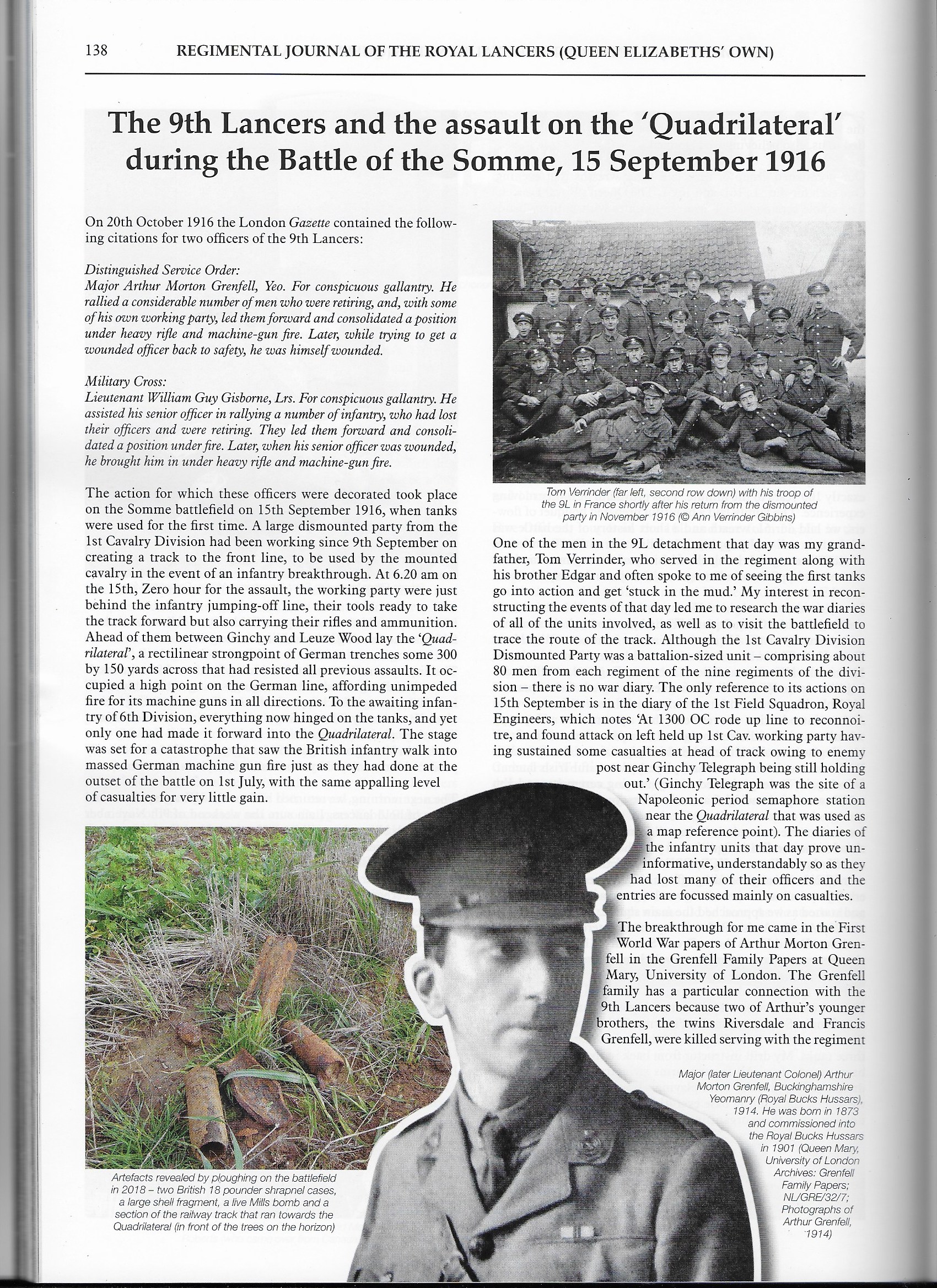
I wrote this article for the 2018 edition of the Chapka, the Regimental Journal of The Royal Lancers (the Chapka was the distinctive helmet adopted by British lancers in the late 19th century). The Royal Lancers incorporates the 9th (Queen’s Royal) Lancers, the regiment of my grandfather Tom Verrinder and his brother Edgar during the First World War, and this article is based on their experiences on 15 September 1916 during the Battle of the Somme - the day that tanks were first used in action. A comprehensive account of my grandfather’s experiences with the 9th Lancers during the war forms the basis of a book currently in preparation.

Major Edward Robertson Gordon was my great-great-great uncle, the eldest son of Captain Thomas Edward Gordon of the 14th Light Dragoons, an Indian Mutiny veteran. He was born in New Zealand on 24 February 1864, educated at United Services College in Devon and saw extensive action with the 9th Lancers over almost two and a half years during the Boer War …
View blog posts by topic by clicking on any of the tags below:
- Akhenaten in the Ashmolean (1)
- Algonquin Park (1)
- Arctic (1)
- Avebury (1)
- Battle of the Atlantic (1)
- Bismarck (1)
- Brandon family (1)
- Brown Bess de Meuron musket (1)
- Cannon wreck 2013 (1)
- Captain L.W. Gibbins (1)
- Captain Thomas Edward Gordon (1)
- Chess in the trenches (1)
- City of Grand Rapids (1)
- Clan Macfadyen (1)
- Clan Macnair (1)
- Cornwall wrecks (1)
- Crusader Gold (1)
- Dive Charles P. Minch (1)
- Diving Tugs 2013 (1)
- Empire Elaine Operation Bullfrog (1)
- Empire Elaine Operation Husky (1)
- Empire Elaine general account (1)
- Fortune wreck 1753 (1)
- Fricourt (1)
- Gibbins family (1)
- Gordons United Services College (1)
- HMS Hood (1)
- HMS Prince Regent (1)
- HMS Victory (1)
- Henry James Gibbins (1)
- Hunter family blogs (1)
- Ice dive Elora Quarry (1)
- Illustrated London News (1)
- James C. King (1)
- John Cotton (1)
- Jonathan Wade (1)
- L.W. Gibbins (1)
- Lizard (1)
- Lizard shipwreck (1)
- Lock 21 (1)
- Major Edward Robertson Gordon (1)
- Marmaduke Henry Littledale Gale (1)
- Mary Rose (1)
- Master and Commander (1)
- Menkaure (1)
- Merchant Navy gun crew Part 2 (1)
- Merchant Navy gun crew part 1 (1)
- Mohawks on the Nile (1)
- Mullion Pin Wreck block weight (1)
- Mullion Pin Wreck three weights (1)
- Mullion Pin Wreck: Corpus Christi (1)
- National Post The deep (1)
- National Post on Patrick O'Brian (1)
- No. 3 Cavalry Field Ambulance Caix 9 August 1918 (1)
- Norman Martin Gibbins (1)
- Operation Dragoon (1)
- PHARAOH: firepower in the desert (1)
- PYRAMID (1)
- Pata sword gauntlet video (1)
- Patrick O'Brian (1)
- Pharaoh A Frightful Incident excerpt (1)
- Pharaoh Menkaure sarcophagus (1)
- Pharaoh free chapter preview (1)
- Plemmirio Roman wreck (1)
- Pompeii and Herculaneum (1)
- Portuguese Jews (1)
- Pyramid excerpt Beatrice (1)
- Pyramid link to Beatrice (1)
- RAF Pathfinders (1)
- Roman art (1)
- Rome (1)
- Royal Anne Galley Orders 1721 (1)
- Royal Anne tap (1)
- SS Grip (1)
- Sarcopagus of Menkaure (1)
- Scheidam (1)
- Schiedam 3D models (1)
- Schiedam Pepys (1)
- Schiedam Wreckwatch 2020 (1)
- Schiedam weights (1)
- Sea Service pistol (1)
- Ship the Hope (1)
- Sicily (1)
- Somme (1)
- Stele of Merenptah (1)
- Sweepstakes (1)
- The Chapka 9th Lancers 2018 article (1)
- The President wreck 1684 bell (1)
- Thomas Prence (1)
- Tobermory ice dive 2011 (1)
- Tom H. Verrinder (1)
- Total War Rome free chapter preview (1)
- Video Grip 2104 (1)
- Vulture Party (1)
- Vulture Party Somme 1916 (1)
- War in another dimension (1)
- Wetmore (1)
- Wreckwatch (1)
- artefacts (1)
- coins (1)
- ship (1)
- writing (1)
- Alice G (2)
- Charles P. Minch (2)
- Clan Murdoch (2)
- Cornwall (2)
- Egyptology (2)
- Gale family (2)
- Gallery lock Regent (2)
- Kitchener of Khartoum (2)
- Lancaster bomber (2)
- Medals (2)
- Military biographies 2 (2)
- Royal Anne Galley (2)
- gun crew (2)
- shipwrecks (2)
- 9th Lancers (3)
- Archaeology (3)
- Canada (3)
- Carthage (3)
- Gale family blogs (3)
- Gordon family blogs (3)
- Historic firearms (3)
- Mullion Pin Wreck (3)
- Nile Expediiton 1884-5 (3)
- Shipwrecks (3)
- The Sword of Attila (3)
- Verrinder family blogs (3)
- Clan Line (4)
- Gibbins family blogs (4)
- Rumpa Rebellion (4)
- Scipio Aemilianus (4)
- The Tiger Warrior (4)
- Gordon of Khartoum (5)
- Merchant Navy (5)
- Nile Expedition 1884-5 (5)
- Pyramid (5)
- diving (5)
- family history (5)
- ships (5)
- First World War (6)
- Royal Engineers (6)
- Second World War (6)
- Captain Lawrance Wilfred Gibbins (7)
- Canada website (9)
- TOTAL WAR ROME: DESTROY CARTHAGE (9)
- Tobermory (9)
- Diving (11)
- Military biographies (14)
- PHARAOH (14)
- Family history (20)

